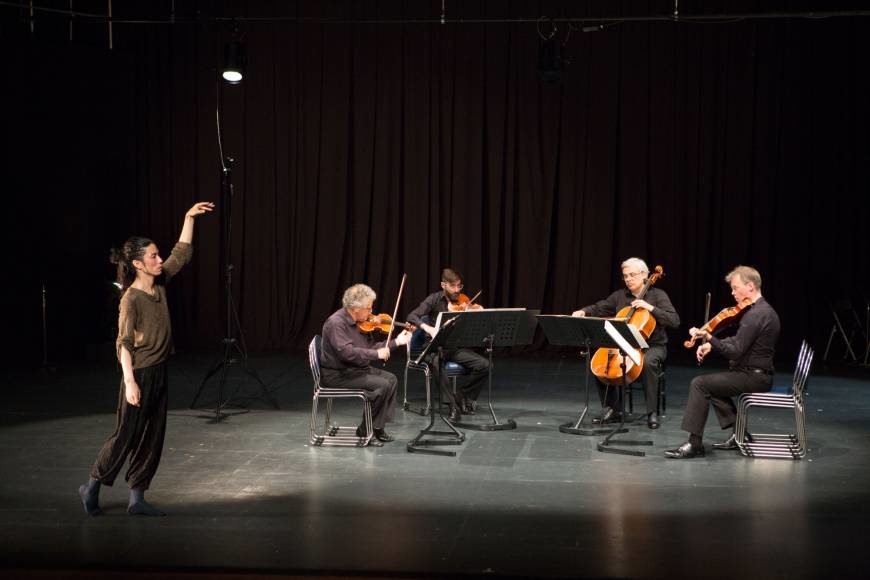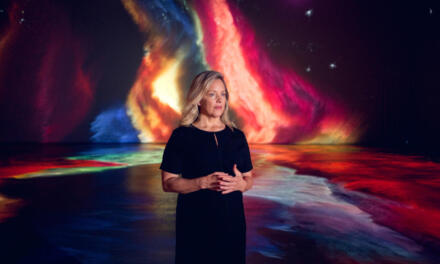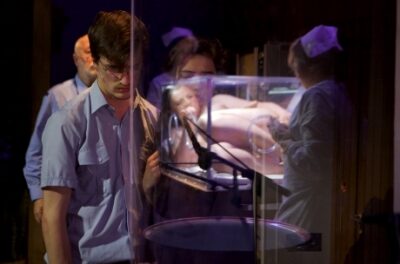Travel around 150 km northwest from the hustle and bustle of Kyoto, and another, far more peaceful world, awaits in the compact onsen (hot-spring) town of Kinosaki nestled on the Sea of Japan coast in a quiet corner of the largely rural city of Toyooka in Hyogo Prefecture.
This picturesque setting has long drawn poets, writers, and painters to its many ryōkan (traditional Japanese inns), restaurants, and bathhouses, which are clustered along a small canal running beside the narrow main street. Now though, this bucolic locale may be in for a pleasant shock, courtesy of one of Japan’s leading dramatists.
While it may seem like something that just popped into Oriza Hirata’s hatsuyume (first dream of the year, which is said to foretell the future), the 55-year-old playwright and director tells The Japan Times that his vision to create “an Asian version of the Avignon Festival Fringe” is something that he has been working on “for years.”
When we met recently in Tokyo, Hirata—the founding artistic director of the Kinosaki International Arts Center (KIAC) artists-in-residence facility, opened in 2014—launched straight into an explanation.
“Toyooka’s population of around 80,000 is almost the same as that of Avignon in southern France, and it’s a perfect area for a charming regional festival featuring lots of smaller-scale productions,” he enthuses—distinguishing his concept, for instance, from Shizuoka Performing Arts Center’s famed Under Mount Fuji international festival that tends to showcase a smaller number of world-famous productions and creators.
“And just like Avignon, where people flock to in summer to enjoy the balmy air and superb cuisine and wine while they discuss plays, dance, and comedy shows they’ve seen,” the artist adds, “Kinosaki’s attractions already include its wonderful scenery and hot-spring inns along with delicious seafood and the famed Tajima beef.
“So now I want to add top-class theatres so the area becomes a unique international mecca where domestic and international artists can bare their souls, too, while relaxing in a hot-spring bath,” he explains with a chuckle.
At present, Hirata is the artistic director of his own Seinendan theatre company based out of the Komaba Agora theatre in central Tokyo—an imposing property he inherited in his early 20s, alongside significant debts, from his father.
Just as many are eyeing up how to cash in on the Tokyo Olympics in 2020, Hirata took Japan’s art world by surprise in September last year when he announced that by the time the games begin he intends to have moved Seinendan’s entire base to Toyooka.
Explaining why he made the decision, Hirata says: “I think Tokyo is a good consumption place and some of Seinendan’s performances will still be here, but it’s not suitable for artistic creation. Anyway, I will hand over my artistic director’s position at Agora to a younger generation to let them experience the job of running a theatre.”
Rather than dwelling on his departure, Hirata explains that thanks to contacts he’s made through tours with Seinendan to France, the United States, South Korea, China and elsewhere, KIAC has already received 99 applications from 23 countries for its artists-in-residence programs for 2018.
“I’m basically not interested in becoming the No. 1 in Tokyo,” he says. “Instead, I see my target in an international market and I believe I can reach that directly from Toyooka.”
Although he was quick to applaud some dramatists’ efforts to reach out overseas, specifically citing SPAC’s Under Mount Fuji as well as Festival/Tokyo, Kyoto Experiment, and TPAM (Performing Arts Meeting in Yokohama), he adds, “Overall it seems that many young people just like making niche plays for their close friends and devoted fans, while many leading theaters have become venues for wealthy people enjoying a special night out.”
In addition, Hirata notes how big commercial enterprises are quick to enlist rising talent to write or direct one production after another, with the result that they soon burn out. This, too, is something he aims to counteract by, as he put it, “building a theater city up from the grassroots by working closely with the public sector and other stakeholders.”
“In Toyooka, we’ve started a new class called Communication Education Through Drama at all the 39 elementary and junior high schools—and now the city government aims to introduce it in the high schools.
“As today’s children have little chance to take part in society outside of their nuclear families,” he says, “we would like to make up for that through drama. From this year they’re letting us incorporate drama into the examination for public service employment as well, so the whole city is becoming involved in many different ways.”
Hirata then shares yet more ideas he’s working on, including setting up a liberal-arts university in Toyooka.
“It may be a small-scale institution, so I’m planning for about 400 students to study arts subjects and tourism intensely for four years, with a great deal of emphasis on learning foreign languages,” he says, almost apologetically. “Anyway I believe learning English is a requirement for arts management today, and in their third year it will be compulsory to study abroad.”
Referring to the country’s growing wealth gap and falling birth rate in particular, he says, “Such venues as public theaters that rely on taxpayer funding must recognize their mission to provide works that relate to today’s social and political issues and provoke discussion among people—the kind of works that have been rather absent in theaters for a while.”
In a similar vein, he notes how few artistic directors currently exist in Japan, despite the position being central to theater culture in most countries.
“I think most Japanese prefer to feel everybody is equal, so even in the arts, they’re uncomfortable with one leader. However, the artistic director is an important role, especially in a public theater, because he or she must take responsibility for the programs and demonstrate its social role to the public.
“Interestingly, despite this, none of the artistic directors of drama at the New National Theatre has ever had that job before, whereas in other countries it’s normal to get experience at a small theater before moving to a bigger organization and so on.”
Turning next to the challenge that all theaters face, whether large or small, public or private—that of getting people to pay to see what they’re staging—Hirata again brings a breath of fresh air to the issues involved.
“I don’t think the current system—in which people buy a ticket for each program they want to see—will keep going much longer, because to sustain it many theaters in Tokyo, for example, need to cast famous TV actors and celebrities to loosen people’s purse strings, but that’s expensive and it’s reaching its limits now,” he says.
“So we need to change our way of thinking, and I want to create a membership system in Toyooka along the lines we’ve already introduced at Komaba Agora, where for a set fee members can book to see as many Seinendan performances as they want. That way I hope Toyooka becomes a place where people recognize theaters as being essential to their lives like hospitals and schools, and use them on a daily basis.”
Then finally, returning to his dream, Hirata concludes by saying, “Through the festival, I hope Toyooka comes to be known around the world as one of the major drama hubs in Asia, especially for the region’s rising talents.
“Just now we’re building three new 150-seat theaters—then we’ll be ready to fire the starting gun!”
This article was first published in The Japan Times on January 11, 2018, and has been reposted with permission.
This post was written by the author in their personal capacity.The opinions expressed in this article are the author’s own and do not reflect the view of The Theatre Times, their staff or collaborators.
This post was written by Nobuko Tanaka.
The views expressed here belong to the author and do not necessarily reflect our views and opinions.


















